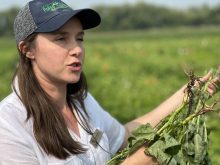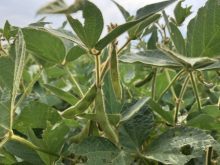Mustard growers doing battle with weeds such as kochia and wild buckwheat could have a new tool at their disposal in the next few years.
Researchers have been investigating whether sulfentrazone is suitable to be registered in Canada as a minor use pesticide for a variety of smaller crops.
“If we could get kochia and wild buckwheat control for yellow mustard, that would be a big leap forward,” said Eric Johnson, a weed biologist with Agriculture Canada.
The product is likely to be registered for use on sunflowers, flax and chickpeas in 2007, but mustard growers will have to be patient.
Read Also

University of Manitoba hires potato researcher
A new research chair position at the University of Manitoba will tackle sustainability in the potato industry.
“For mustard, we’re not anywhere close to considering registration,” Johnson said, although he added it does show promise.
“I wouldn’t say I’m confident yet. We’re still in the development stage and if everything went really well, it will probably be three or four years before we would see it available for mustard.”
Johnson made the comments after speaking to growers attending a Saskatchewan Mustard Development Commission meeting during Crop Production Week.
Sulfentrazone, a pre-emergent broadleaf weed control sold in the U.S. under the trade name Spartan, has performed well in field trials in Saskatoon, but not so well in similar tests at Scott, Sask.
Rene de Moissac, a mustard grower from Biggar, Sask., said there’s no question growers would welcome anything that will improve weed control, a major issue in mustard production. While growers don’t necessarily like using chemicals on their crops, sometimes it is unavoidable.
“If we could take a product like sulfentrazone and blend it in with our glyphosate burnoff and save an application, and maybe follow with an in-crop control of grassy weeds and volunteer cereals, we’d be in good shape, although it would still be costly,” he said.
“Anytime we can get yield and create a margin, especially under drier conditions, you have to go with chemicals.”
Kochia and buckwheat are especially troublesome, he said, adding kochia has “run rampant” since the drought of 2002.
Johnson said there are a couple of reasons why weed control, particularly in broadleaf weeds, is so difficult for mustard producers.
Because it’s a smaller crop, companies are reluctant to spend money developing products specifically designed for the crop. As a result growers have to rely on older, less effective products.
In addition, mustard is closely related to many weed species, such as wild mustard, and many herbicides target those related weeds, rendering them unsuitable for use on mustard.
That’s why sulfentrazone could be an important development for the industry.
“If there were other options out there, I would probably not pursue it as strongly because there are issues with crop tolerance,” Johnson said. “But there are such limited options for growers right now.”
He said a key challenge will be determining an application rate that doesn’t injure the crop but provides adequate control in a wide range of environments, adding it would likely be recommended as part of a broader weed management system.
“We had high levels of injury in the trials at Scott, but we can work on rates and timing to improve that,” he said.














